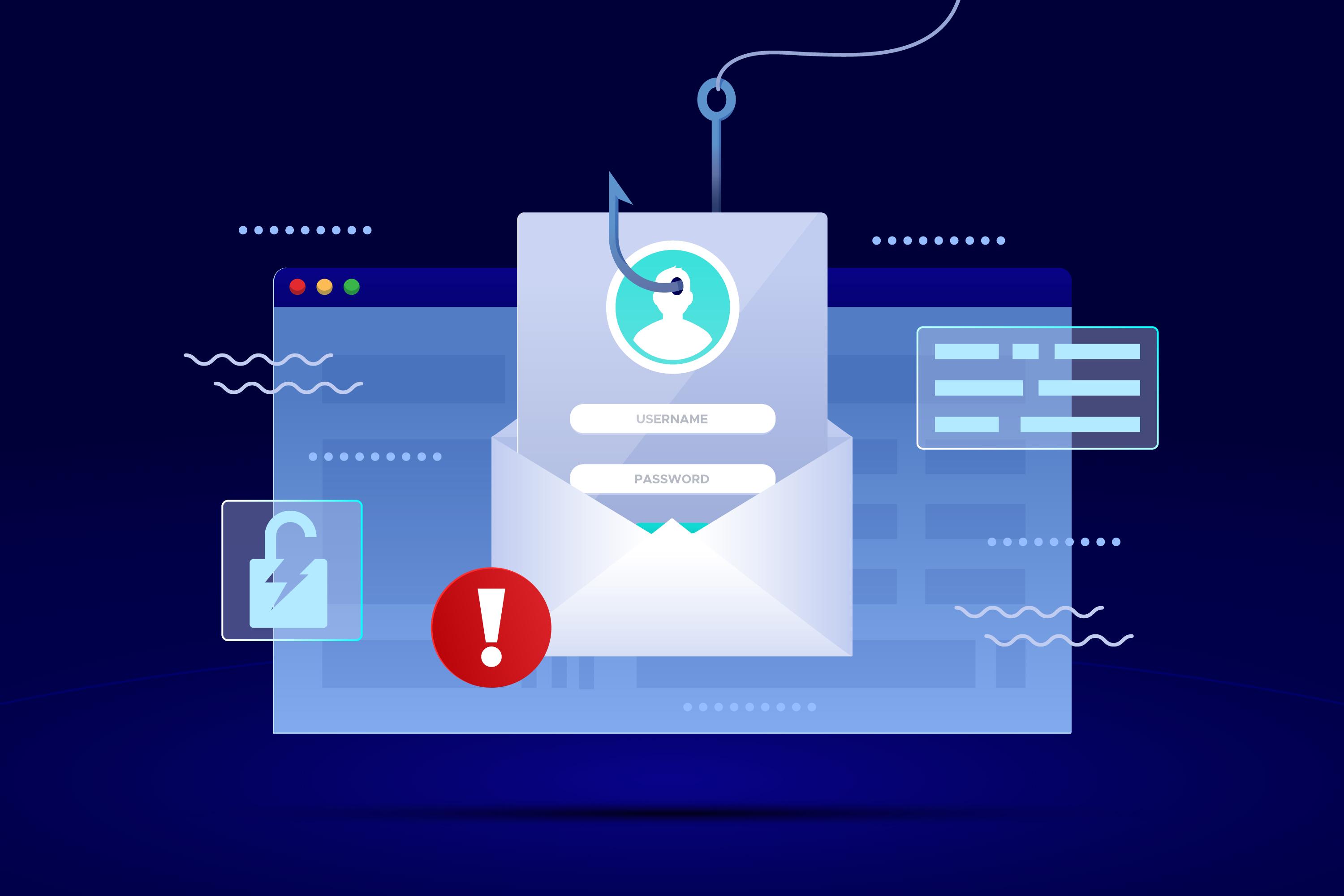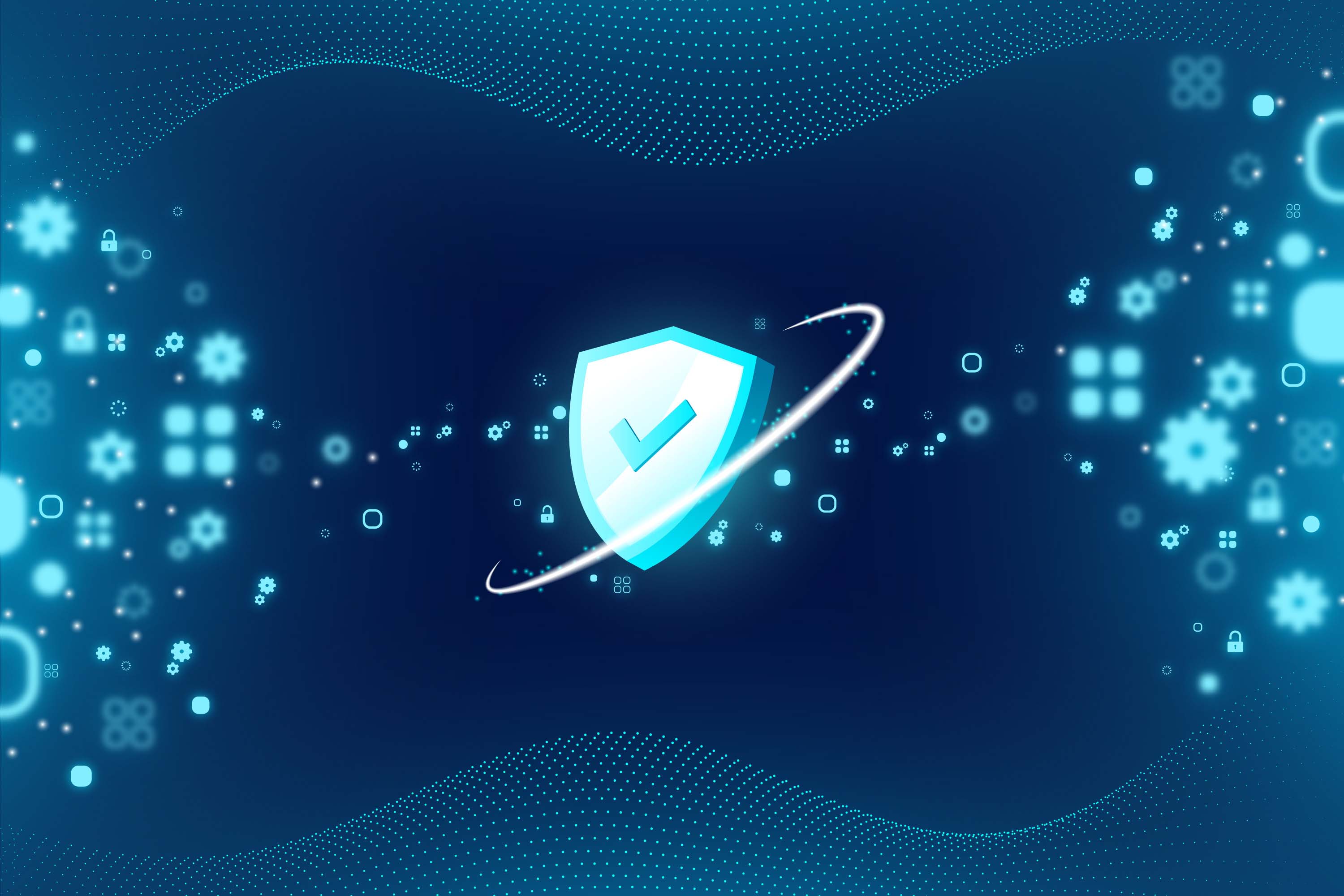
by Rebeca | May 10, 2023 | cloud, Customer, cybersecurity, News, Release, Resources, trends
Protecting against Phishing: How Companies Can Stay Safe
Phishing is becoming an increasingly common threat. In this post, we explain in more detail what it is and how hackers access companies’ confidential information. We will also look at ways companies can protect themselves against this type of attack, and how Soffid can help companies and organizations stay safe.
What is Phishing?
Phishing is a type of cyber-attack in which hackers try to deceive users into revealing confidential information, such as passwords or credit card numbers. These attacks are often carried out through fraudulent emails that appear legitimate, and that contain links or attachments that download malicious software onto users’ devices.
Which types of companies are affected by phishing and how do hackers access information?
Phishing can affect any company, regardless of its size or sector. Hackers often target companies that store valuable information, such as customer personal data or financial information. If a successful attack occurs, they can access this information and use it for fraud, identity theft, or extortion.
Cybercriminals send fraudulent emails or messages that appear to be from trusted sources, such as banks or social networks, to lead users to fake websites. There, they enter their credentials, giving access to their personal and financial information. They can also send malicious attachments that download malware. Another common way is through phone calls, text messages, or social media, in which they impersonate legitimate institutions and request information.
How can we protect ourselves?
It is essential for companies to protect themselves against these attacks. Monitoring and analysing emails to detect suspicious patterns, filtering emails, and educating employees about the risks of phishing are some of the implementations that must be carried out. Other important measures include installing cybersecurity tools, such as firewalls and antivirus software.
At Soffid, we want to help protect companies’ data with complete security solutions. Discovery our convergent platform.
Shall we talk?
(1) Gov UK

by Rebeca | Sep 7, 2022 | cybersecurity, Definitions, News, soffid
Nowadays, Chief Information Officer are focusing on business outcomes, agility, and improving customer experience through technology. While at the same, streamlining backend operations with automation is becoming one of the primary focus areas of technology leaders.
Despite this pressing need for digitization in the organization, around 79% of them are still in the early stages of technology transformation, according to Mckinsey. It is due to critical issues related to legacy system barriers such as integration, security, etc., in today’s landscape. So, there is a need to create an environment to provide holistic accessibility to emerging technologies.
Challenges faced by Chief Information Officer
The top challenges faced by Chief Information Officer in 2022 are as follows:
1-Digital Transformation has been evolving slowly.
45% of executives don’t think their company has the right technology to implement a digital transformation. But COVID-19 has forced many organizations to re-examine the pace of their digital transformation initiatives. 35% of companies view digital technology as disruptive to their business model.
2-As data becomes more distributed, integrating a large volume of data from different sources in disparate formats on the legacy system is a roadblock.
97% of organizations planning to undertake digital transformation initiatives. But integration challenges hinder efforts for 84% of organizations. So, the CIOs priority in 2021 is how to extract powerful insights by removing the barriers around the data. At the same time they must be accessible.
3-Over the last few years, there has been a massive growth and adoption of new technologies, across the businesses.
Such as AI/ML, data science, etc. As a result, there is a shortage of required skillsets in an organization. According to Forrester, while 75% of businesses have a digital strategy, only 16% claim to have the skills to deliver it.
4-Legacy systems are unable to keep up with business demands.
One reason is skyrocketing data growth and the inability to manage multiple data formats on legacy storage platforms. So, CIOs must make a considered choice for modern data platforms that allows integrating multiple datasets from a variety of sources and create a single view of the data.
5-Manual processes and workflows are no longer feasible for many organizations.
Automation initiatives that used to put on the back burner are now quickly spun up. Chief Information Officer need to start thinking of automation as a liberator of their people. Since it works as an executioner freeing the employee from repetitive tasks to focus on more productive tasks.
6-As CIOs are constantly addressing new and developing business challenges, there is a need to adopt emerging technologies such as AI/ML and IoT to compete and stay ahead of the evolutionary curve.
As we enter 2021, we must look beyond the latest trends and develop a mindset that enables them to identify a problem that is looking for an answer.
7-Fostering innovation is one of the priorities of CIOs today.
But keeping up with the business demand with existing resources has become a challenge. For CIOs to keep up with business demands, new technologies and processes need to be implemented. Innovation can’t happen if there is a massive backlog of business requests in an organization.
8-Addressing Evolving Security Threats.
As technology advances so too do the methods of exploiting it for nefarious reasons. Hackers have existed if tech has existed, but in recent years their tactics have evolved and show no sign of slowing. In 2021 two of the biggest security challenges CTOs will face are phishing and ransomware. Although phishing is not a new hacking tactic, how it is carried out has evolved. Scammers now use SMS and phone calls to impersonate reputable sources and trick consumers into divulging sensitive information. To combat this, IT leaders must re-think their credential management and foster a strong sense of security awareness across their organization.
9-Increased Investment in Edge Computing.
Data growth outside of the data center is a new reality for most organizations. These days enormous quantities of data are being generated from remote branches, mobile devices, and IoT smart devices. By 2025, Gartner1 estimates that 75% of enterprise data will be generated and utilized outside of the data center. The need to deploy computing power and storage capabilities at the network’s edge will pose a great challenge to CTOs & CIOs in 2021 and beyond.
10-Maintaining Data Privacy & Governance.
Although data can be an incredible source of useful insight, the risk that comes with handling it poorly can make it a toxic burden that opens your organization up to penalties, fines, or worse. In 2021 California’s Consumer Privacy Act (CCPA), which is generally seen as “GDPR light,” goes into effect, and many other states will likely follow suit. Strict data privacy regulations are quickly becoming the norm, making data security and governance one of the most pressing challenges for IT leaders.It thus becomes indispensable for you to learn how to lead the new normal.
11-Providing a Perfect CX.
Digital customer experience is the new battlefield for staying competitive, and the responsibility of delivering a seamless CX falls squarely on IT leaders.
Security issues
One of the biggest tech-related challenges inherent with shifting to a hybrid work model is, without a doubt, security. When work happens within the office, Chief Information Officer have a certain level of control over security.
They can set specific parameters to keep their networks, data, and sensitive customer and employee information secure. For example, they can restrict access to certain websites or applications, or require two-factor authentication to access certain files or information.
But there’s much less of that control when employees are working remotely. That’s why remote work can pose a much larger security risk than having your team contained to your office. For example, employees generally have less secure Wi-Fi connections when working remotely.
It’s also more difficult to monitor, control, or put safeguards around your employees’ internet usage when they’re working out of the office and/or on their own device—which, depending on their behavior, can add more risk to the companY.
There’s no denying that security is a risk when shifting to a hybrid work model. But CIOs can counteract those risks with effective employee training. If you’re concerned about cybersecurity for your hybrid team, make sure you’re training employees on how they can keep their devices and networks safe and secure when they’re working remotely. For example, you might create a “best practices” training that goes over the basics of cybersecurity, the do’s and don’ts of how to stay secure when working remotely, and some of the most common security issues employees need to be aware of.
Resources:
(1) Gatner
(2) Mckinsey
(3) cioinsight.com
Picture: Foto de Cuadrado creado por rawpixel.com – www.freepik.es

by Rebeca | Mar 9, 2022 | cybersecurity, Resources, soffid
Every company must face the new cybersecurity challenges and for this there is a new approach. “Developing a fully integrated strategic approach to cyber risk is fundamental to manufacturing value chains as they align with the operational technology (OT) and IT environments—the driving force behind Industry 4.0“, Deloitte said recently.
With the advent of Industry 4.0, threat vectors are expanding. That is why new risks must be considered and addressed. The main objective will be to implement a safe, vigilant and resilient cyber risk strategy. When supply chains, factories, customers, and operations are connected, the risks of cyber threats increase. The risks are enhanced and have a greater scope, he added.
Adopting new approaches and challenging conventional thinking is essential in an increasingly digitized world. “In terms of security, if we’re not moving forwards and developing, then we are effectively going backwards because our adversaries will definitely be moving forward,” commented Johnson (partnerships and outreach manager (digital and STEM), founder and director of Women in Cyber Wales)
Technology change has been beneficial to both organizations and its employees. The adoption of technological innovations by organizations has skyrocketed in recent decades. increase global spending on technology across all industries.
The adoption of new technologies brings many benefits to the company. At the same time it comes with risks and free threats. The new technology must fit perfectly into the business. If the right fit is not ensured the sustenance will be at large risk.
The adoption of new technologies to overcome cybersecurity challenges
New technology while adopting create internal conflict in an organization. They are such as managerial, Technological, sociological and economic related. There are several attributes of conflicts and they are usability, interoperability, common business views, agility, scalability, reliability, openness, manageability, infrastructure and security. Here Security assumes major role.
With data breaches continuing to pose a threat to any emerging technology, it’s critical to think about a good investment in cybersecurity. The increase in technology exists in any type of business, from health care, finance, manufacturing, services or any other. In order for these companies to be able to exploit them efficiently and prosper, they must put into practice cybersecurity policies and practices.
It is necessary to adequately analyze the security risks of the technology that will be implemented. In addition, before institutionalizing technologies, effective strategies must be implemented.
Why Security Standards Are Important
Conformance with established standards and best practices is essential for increasing the protection baseline in cybersecurity. Many organisations lack personnel experienced in the domain and, therefore, have a hard time adopting new approaches and techniques. Education is an important component, but in-depth knowledge is hard to transfer.
Thus, certification methodologies that distil certain best practices into structured, easy-to-apply guidelines have an important role in the proliferation of cybersecurity innovation.
The Evolution of Threat Hunting
Threat hunting continues to evolve for organizations that focus on proactively detecting and isolating Advanced Persistent Threats (APTs) that might otherwise go undetected by traditional, reactive security technologies.
While many SOCs are struggling to cope with the current security threat workload, more organizations are adopting threat hunting as part of their security operations. They are discovering that proactive threat hunting can reduce the risk and impact of threats while improving defenses against new attacks.
Source:
(1) cyber-security.com
(2) cio.com
(3) Deloitte.com
(4) cybersec4europe.eu
Picture: Vector de Fondo creado por pikisuperstar – www.freepik.es

by Rebeca | Nov 10, 2021 | soffid
Managing identities and access entitlements is becoming increasingly challenging in a rapidly changing business, regulatory and IT environment, but those challenges are compounded for multinational organisations due to the distributed nature of their operations.
Identity and access management (IAM) is especially challenging for multinational companies that need to manage the identities of employees, partners, customers, consumers and devices wherever the company does business, while also complying with a range of data security and privacy regulations.
The domain of Identity and Access Management (IAM) has evolved over the past two decades. In the beginning, its primary purpose was to meet simple authentication requirements. As the adoption of IAM solutions increased across multiple industries, the need to meet several other requirements became apparent: service password management, single sign-on, multifactor authentication, entitlements, role engineering, authorization, life cycle management, access certification and more.
The accelerated shift to work-from-home due to the pandemic also means that SMBs are now more prone to cyberattacks, and the solutions that cater to organizations of all sizes are scant. The landscape of IAM is only becoming more convoluted and straying further away from simple and holistic security.
Converged IAM is one solution to this predicament. An IAM product that converges full suite of access management, authentication, authorization, IGA, PAM and risk analytics solutions in one platform can empower organizations to mature their overall security posture quickly, support identification of indicators of compromises (IOC) proactively and strengthen external as well as internal security maturity. It can also increase employee productivity with daily application usage, password management, single sign-on, access requests, approvals, reviews and more.
The future of IAM is not in fragments of different niches stitched together to cover various functionalities. It is in providing a single platform to meet all the IAM demands of today’s digital landscape that is constantly being encroached by threat actors.
Within the broader IAM challenge, there are several other specific challenges facing multinational organisations, often related to the fact that IAM is run differently in each region or location where the company operates. These specific challenges include:
- Being able to deal with customers and employees with identities originally registered in one geography using their identities to access services and systems in another geography.
- Delivering IAM services using different IAM technology stacks, processes, operating models and maturity levels across different company locations.
- Supporting different languages in the different countries where the company operates.
- Ensuring fast time to market for products and services requiring consistent IAM for employees, partners and customers in response to market needs and opportunities.
- Enabling fast, simultaneous rollouts for new applications to new markets.
- Standardisation and automation to reduce costs and risk of in-house solutions.
- Built-in support for the internet of things (IoT), DevOps models and local DevOps teams.
- Retaining control of infrastructure, changes, deployments and interfaces.
- Complying with specific regional and local regulatory requirements in addition to global regulatory requirements in terms of data protection, information security, product safety and quality assurance, export regulation and financial regulation.
Identity and access management is a very common element to regulations, with each type of regulation often setting some requirements for managing IDs, onboarding, identification of customers, authentication, access control and access governance.
To deal with these regulations, multinational companies need a strong IAM that is flexible enough to be strong in some regions, but more relaxed in others.
Identity-as-a-service (IDaaS) solutions have appeared on the market in recent years, in line with the as-a-service trend. These IDaaS solutions offer several key benefits that could help multinational organisations to tackle the challenge of running a global IAM service.
Since first appearing on the market, IDaaS offerings have gradually matured to include identity management, entitlement management, authentication and authorisation, which are the key components of IAM, adding the depth required by modern enterprises to reduce security and compliance risk.
The IDaaS market has registered significant growth in the past few years because of the ability of IDaaS to enable organisations to:
- Achieve better time-to-value proposition over on-premise IAM deployments.
- Extend IAM capabilities to meet the security requirements of growing software as a service (SaaS).
- Adopt global IAM standards and practices with access to industry expertise.
- Reduce internal IAM costs and efforts to keep up with the market trends.
- Limit internal IAM failures in project delivery and ongoing operations.
The shift of business workloads to the cloud, however, is a long-term journey for most businesses. Similarly, the shift from on-premise IAM to IDaaS services, while at the same time delivering comprehensive support for IAM capabilities across all target systems, regardless of their deployment model, is also a multi-step journey.
Sources:
(1) Computerweekly
(2) Forbes
Picture: <a href=’https://www.freepik.es/fotos/tecnologia’>Foto de Tecnología creado por rawpixel.com – www.freepik.es</a>





